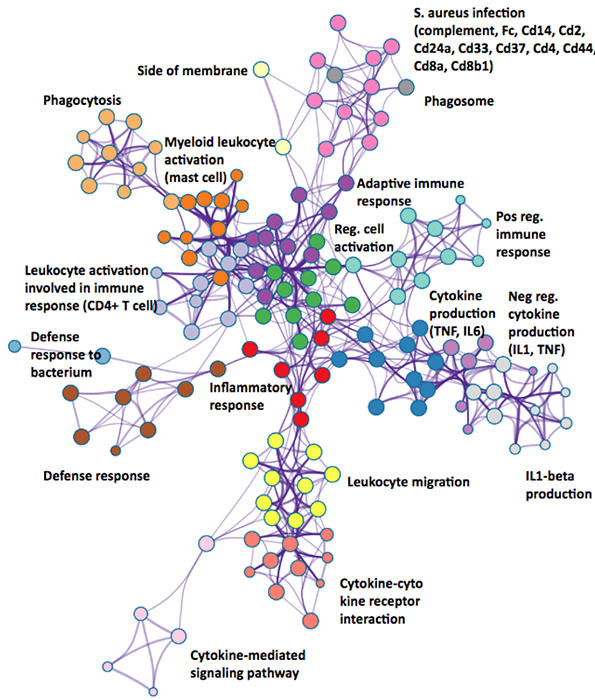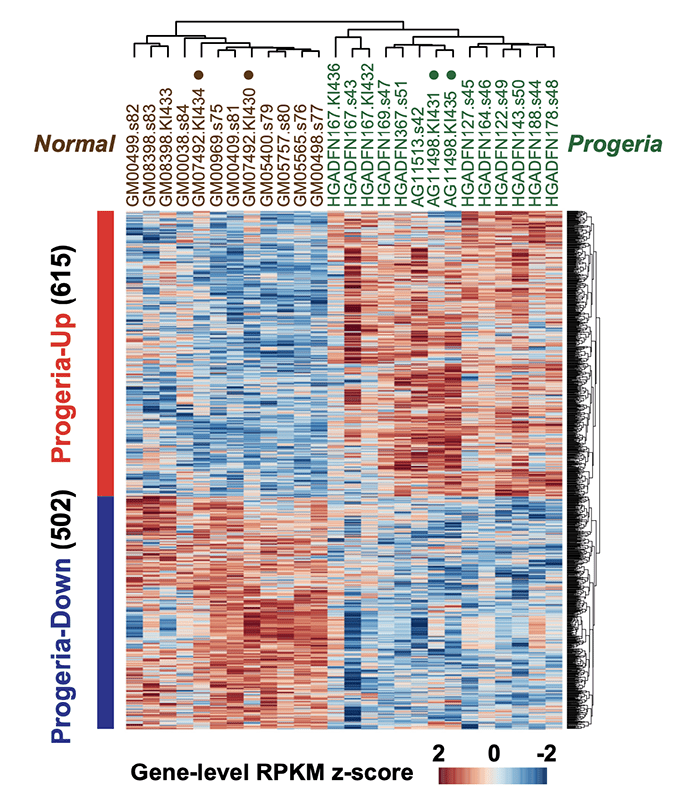Laminopathies

Molecular Pathogenesis of Cardiomyopathies
Mutations to LMNA, the gene encoding the nuclear lamina component Lamin A/C, cause severe dilated cardiomyopathies in human that often require heart transplantation. LMNA mutations are thought to be responsible for 5-10% of all familial cases of dilated cardiomyopathies. How do defects in Lamin A/C expressed almost every differentiated cell in our body cause specific disease in the heart? We investigate the molecular basis for LMNA-related cardiomyopathies using mouse models and iPSC differentiation.

Pathogenesis of Hutchinson-Gilford Progeria
Hutchinson-Gilford progeria is a rare disease often called “premature aging” disorder, caused by mutations to the nuclear Lamin A/C gene. The prevailing hypothesis for the pathogenesis of progeria is that progerin, the mutant Lamin A/C protein expressed in the patient cells, accumulates at the nuclear periphery and this causes heterochromatin disorganization, leading to derepression of genes in heterochromatin. We explore an alternative hypothesis that disrupted phosphorylated Lamin A/C-enhancer binding leads to pathogenic gene expression in euchromatin.



